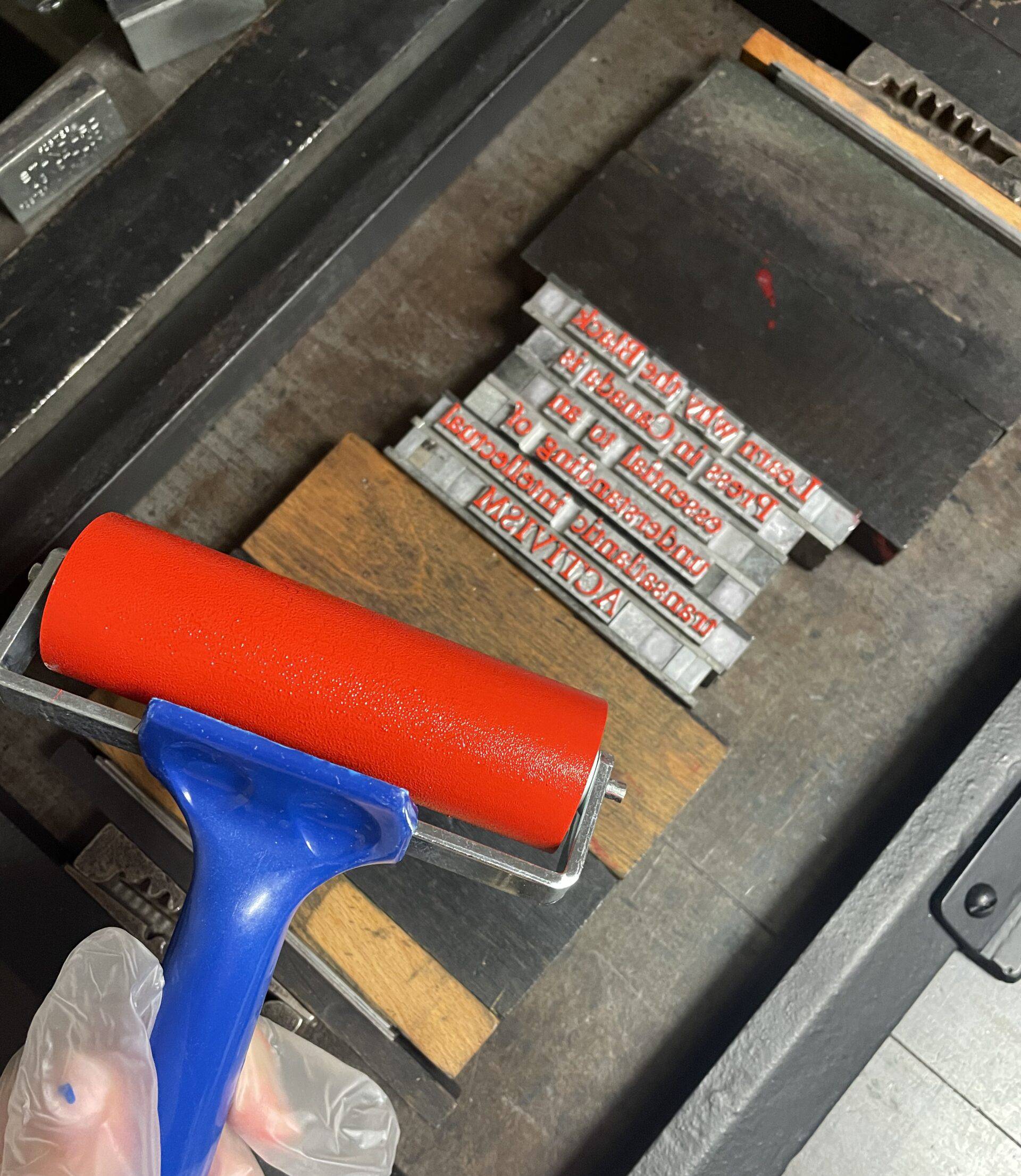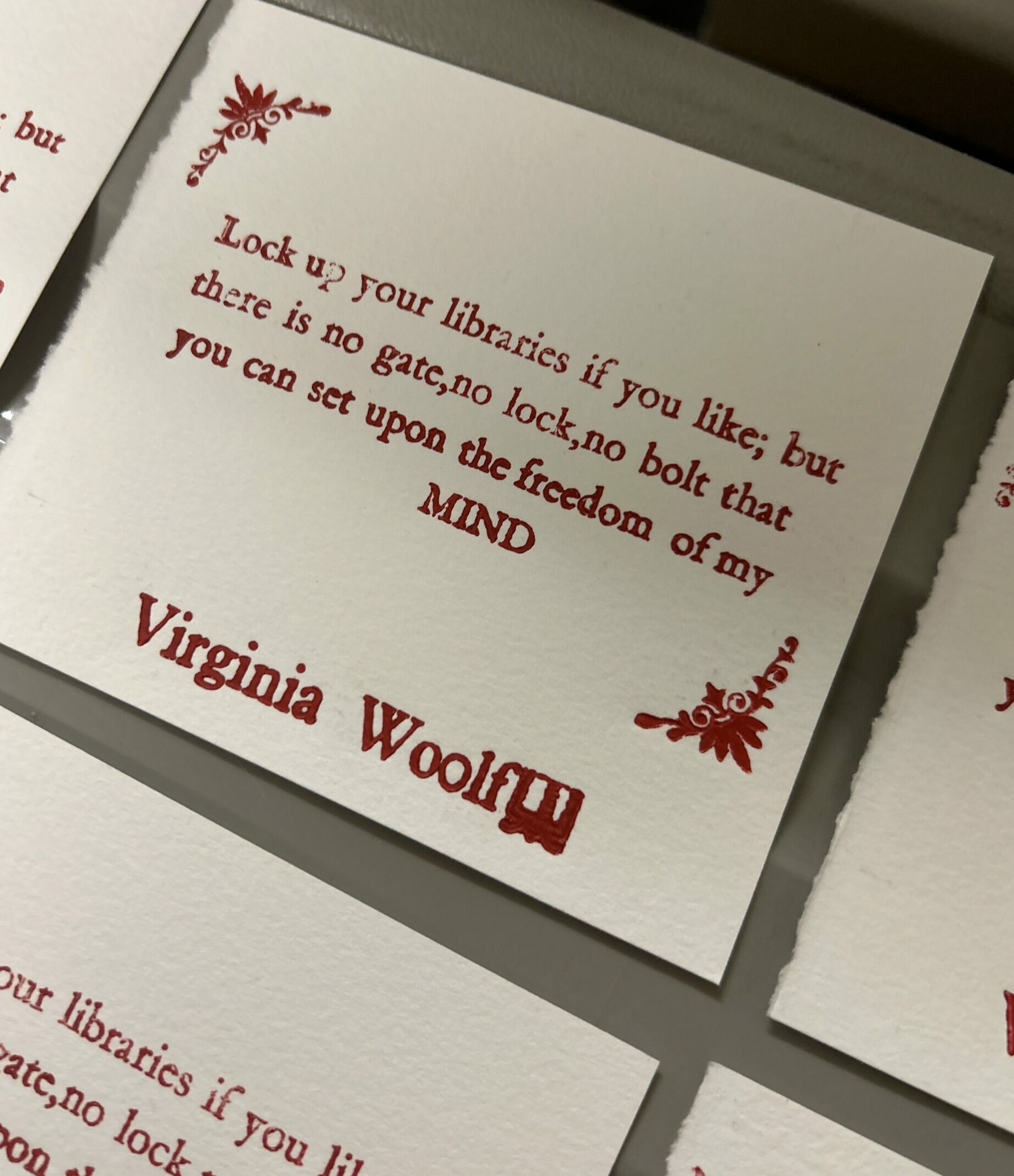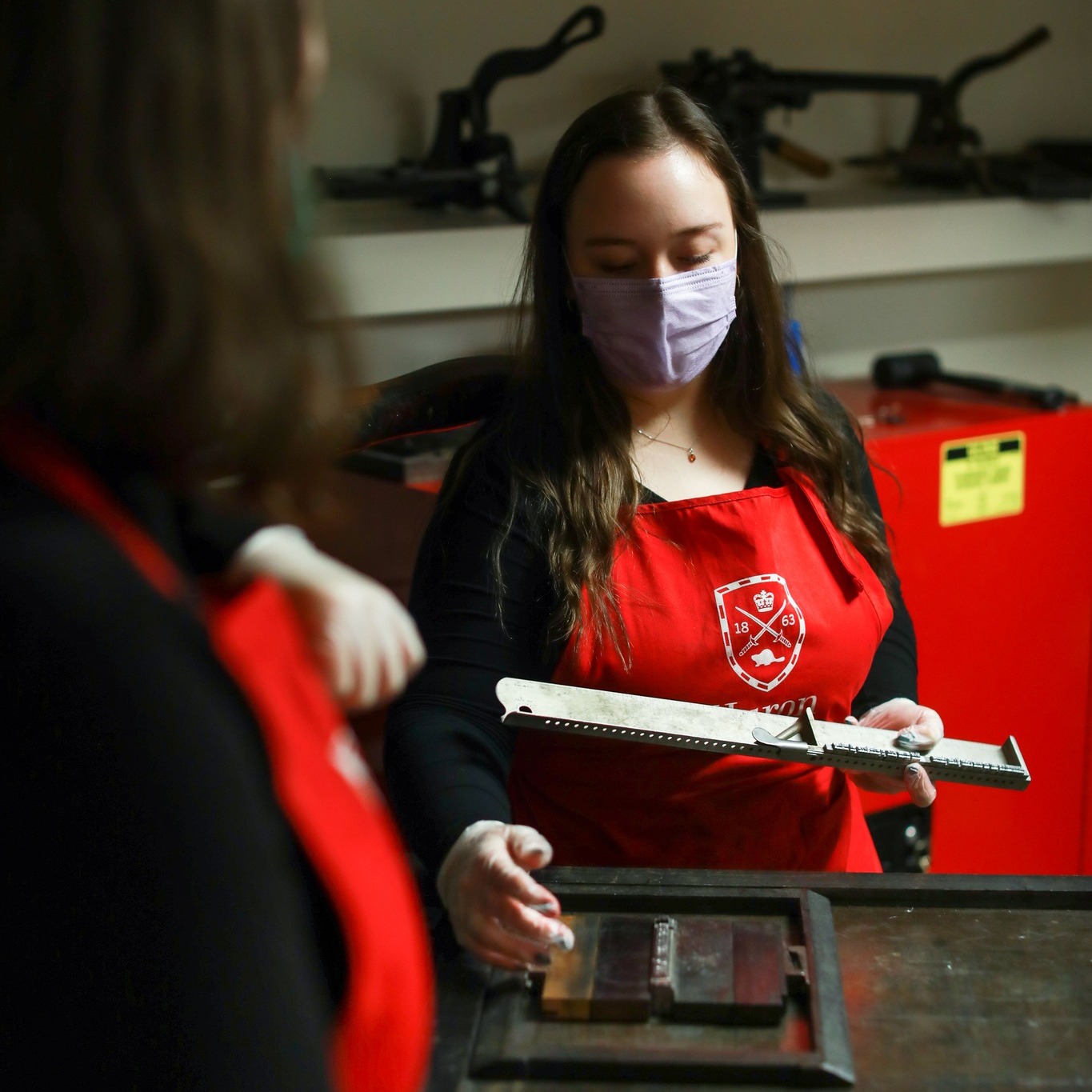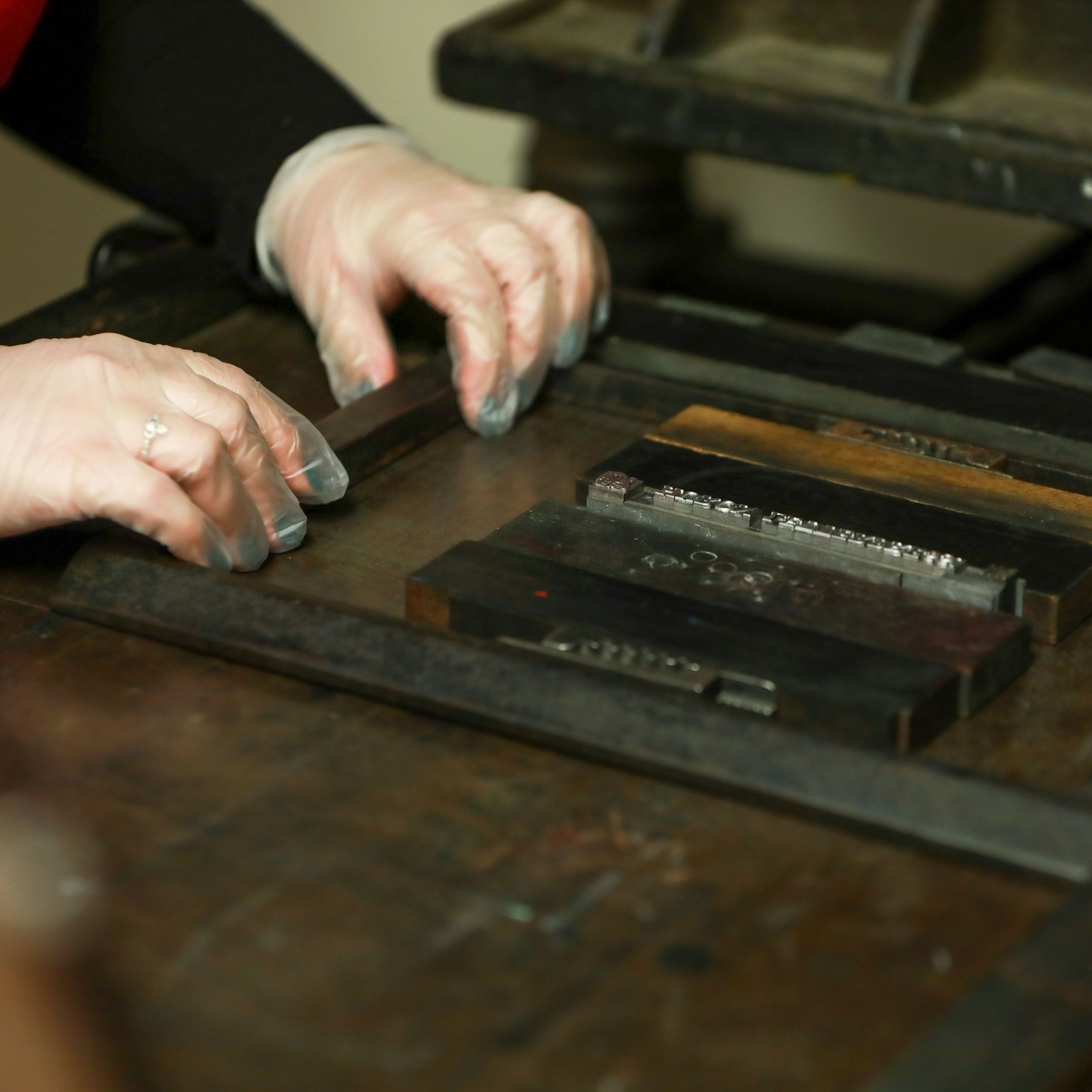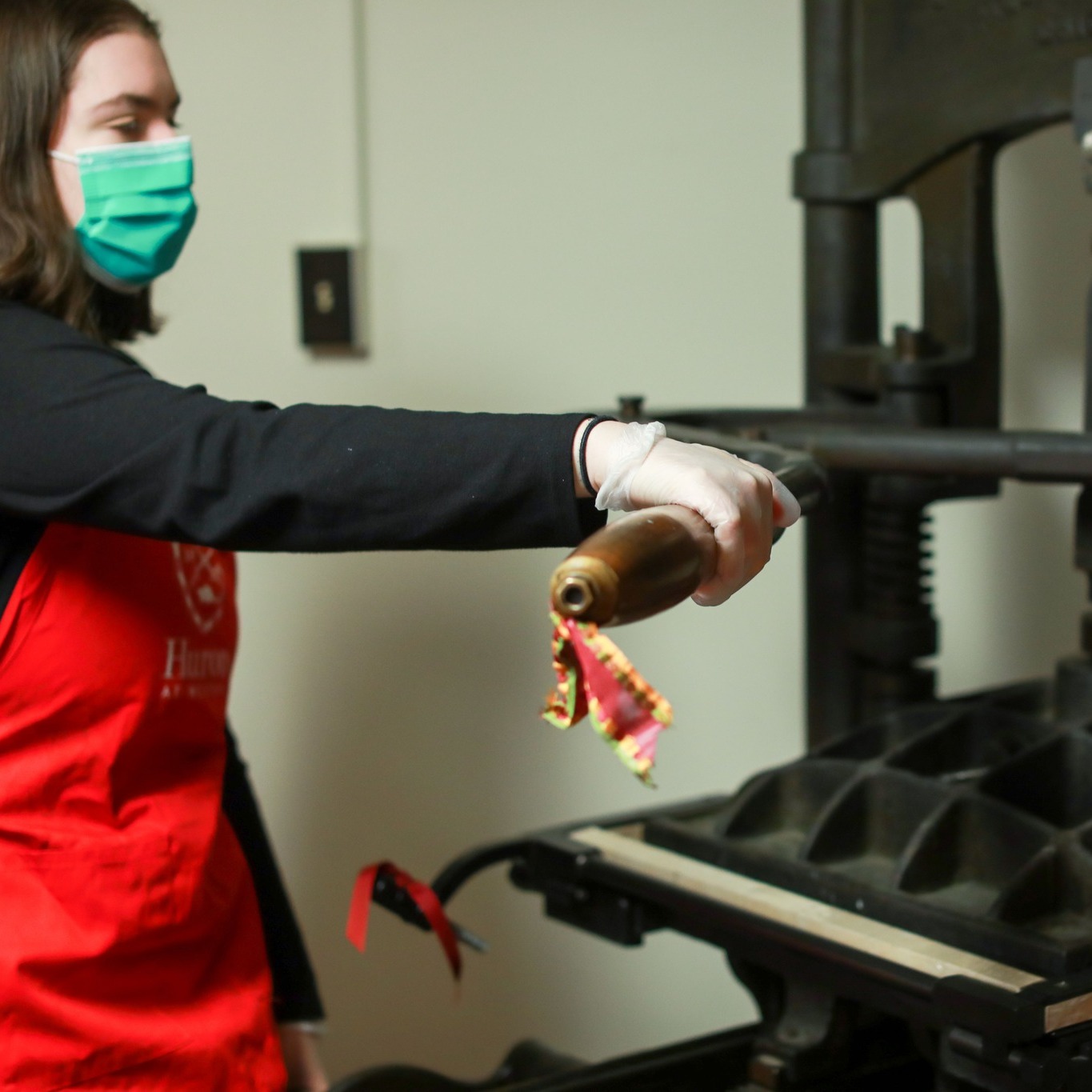Letterpress
This year’s class adopted the theme of writer Virginia Woolf’s book, “A Room of One’s Own.”
The book was first published in September of 1929 as an extended essay based on two lectures she delivered at Women’s colleges, Newnham College and Girton College, at the University of Oxford. In her work, she asserts that “a woman must have money and a room of her own if she is to write.” She published this piece at a time when young women were discouraged from attending college because of fears that an education would make them unfit for motherhood, marriage and their place in the home. Woolf’s book addresses how centuries of prejudice and financial, educational and social disadvantages have formed structural barriers to women’s creativity. She argues that women must create their own space to write if they are ever to express themselves creatively and activate the freedom of their minds. Woolf also engaged in letterpress printing as part of her work for the Hogarth Press, which she had co-founded in 1917.
The Letterpress Studio is a material and symbolic space that embodies Virginia Woolf’s message. Students in the studio engaged in the physical labour of print. This included setting the chase one day, placing ink over the letters the next and imprinting the ink onto paper. Taking control of the printing process and advocating for ownership of the thoughts and ideas printed embodies Woolf’s message to women to take the creative process back into their own hands. The studio experience helps gauge the importance of authority over one’s mind and work.
The Letterpress Studio group also contributed to the class project’s aims to understand activism in print culture. The group’s efforts to learn how to print, bring together their concepts and collaborate reflect the critical tenants of women’s activism. The studio space acted as a place to build friendships and networks of support that were vital for sharing the burden and work of activism faced by women in the past.

